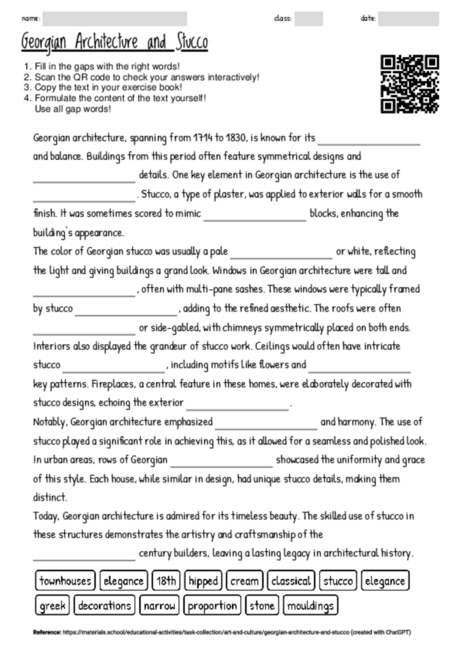Georgian Architecture and Stucco
Cloze texts, like the one created on Georgian architecture and stucco, are valuable tools in language and content learning. They encourage students to focus on key vocabulary and concepts, improving their reading comprehension and retention of the material. The deliberate omission of words challenges students to use context clues and prior knowledge, promoting critical thinking and engagement with the text.
The text on Georgian architecture, specifically, introduces students to historical and architectural concepts in a simplified manner. The use of clear, short sentences makes the content accessible to the targeted age group of 12 to 16 years. Highlighting key terms related to architecture, such as stucco, proportion, and elegance, helps students build a specialized vocabulary.
Integrating history and art through such texts offers a multidisciplinary approach to learning. Students not only learn about architectural features but also gain insights into the cultural and historical contexts of the Georgian period. This approach can spark interest in subjects like history, art, and design.
The text also serves as a starting point for various activities. Teachers can use it to initiate discussions, research projects, or creative writing assignments. Students could be encouraged to compare Georgian architecture with other architectural styles or to explore the role of stucco in modern buildings.
In summary, the cloze text on Georgian architecture and stucco provides an engaging and educational resource. It aids in vocabulary building, contextual learning, and fosters an appreciation for historical architecture among young learners.

